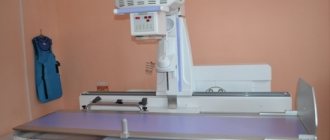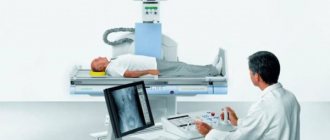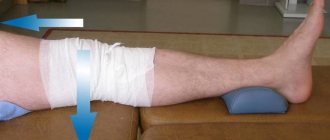early years
The future scientist was born on March 17, 1845 in the city of Lennep, on the site of present-day Remscheid, in Germany. His father was a manufacturer and sold clothes, dreaming of one day inheriting his business from Wilhelm. The mother was from the Netherlands. Three years after the birth of their only son, the family moved to Amsterdam, where the future inventor began his studies. His first educational institution was a private institution under the leadership of Martinus von Dorn.
The father of the future scientist believed that a manufacturer needed an engineering education, but his son was not at all against it - he was interested in science. In 1861, Wilhelm Conrad Roentgen moved to the Utrecht Technical School, from which he was soon expelled, refusing to hand over a friend who had drawn a caricature of one of the teachers when an internal investigation began.
Having dropped out of school, Roentgen Wilhelm did not receive any educational documents, so entering a higher educational institution was now a difficult task for him - he could only claim the status of a volunteer student. In 1865, with precisely these initial data, he tried to become a student at Utrecht University, but was defeated.
Nobel laureate without a high school diploma: X-ray as a proper name
The date March 27, 1845 is special in the human calendar. On that day, a man was born who changed the world. Today his name is pronounced in any country tens, hundreds of thousands of times every day. This name is X-ray.
History shows that almost every world-famous scientist had some kind of special feature, some exclusive fact in his biography. But to become a Nobel laureate without having a certificate of secondary education - the world did not know this. I didn’t know until William Conrad Roentgen appeared.
The incident with the certificate is as sad as it is indicative. The calm, diligent son of the German clothier Willy Roentgen studied at the Utrecht Technical School (Holland). He loved physics very much, and for some reason his physics teacher, Herr Paterson, disliked William. However, the teacher himself could hardly boast of love for himself on the part of his students.
Once, Roentgen’s classmate drew a caricature of a physics teacher. Somehow, the funny drawing fell into the hands of Herr Paterson, and the real investigation began - they were looking for the author. The teacher had no doubts: it could only be X-ray. Willie knew perfectly well who drew the cartoon, but he did not reveal his classmate. And he was expelled from school, from the last class.
This did not prevent William, who knew mathematics very well, from becoming a student at the Polytechnic Institute in Zurich. What followed was a wonderful career as a scientist: Roentgen became a professor, taught at various universities in Germany, France, Switzerland, and in 1894 received the post of rector of the university in Wurzburg.
All his conscious years, the scientist was possessed by “one but fiery passion” - physics. Among other things, he was actively involved in studying the properties of crystals, in particular, the relationship between electrical and optical phenomena in them.
In the end, when he had already lived for half a century, the name of Wilhelm Roentgen and his discovery of the so-called X-rays went down in history. It was truly an event of world significance, which revolutionized not only medicine, but also many areas of technology.
Are x-rays dangerous? Yulia Aleksandrovna Rutskaya, head of the radiation diagnostics department at Clinic Expert Kursk, says:
It all happened on November 8, 1895. In the evening, the scientist sent his assistants home and, as usual, decided to work alone. Closer to midnight, he turned off the light and also prepared to leave the laboratory. Already at the door, looking around, Roentgen noticed that he had forgotten to turn off the current from the cathode ray tube.
And then an unexpected effect attracted his attention: he suddenly saw the paper lying next to the tube, coated with platinum-synoxide barium, flickering in the darkness with a greenish light. X-ray was surprised: after all, the device was covered with a thick case made of black cardboard - no radiation should have passed through it.
He turned off the current and the glow disappeared. When voltage was applied to the device again, the crystals again “came to life” with the same greenish light tint. The physicist immediately forgot that he was just now getting ready to go home.
And weeks of hard work and numerous experiments began. Experiments have shown that the X-rays discovered by Roentgen (as the scientist himself called them, but over time they began to bear his name) have unique properties. First, they penetrate many opaque materials without being refracted or reflected. Secondly, they are not deflected by a magnetic field.
In a word, this is the very accomplishment for which Wilhelm Roentgen received the Nobel Prize. Moreover, he became the first in history to receive this high award in the field of physics.
The first X-ray photograph taken by the scientist shows the hand of his wife, Frau Bertha.
This photo instantly spread around the world. Laboratories equipped with X-ray machines began to open everywhere in medical institutions. Moreover, this was done easily and quickly for the simple reason that the scientist flatly refused to patent his discovery, declaring that it was the property of all mankind, and did not serve as a source of income for it.
To look inside the human body, to see what the skeleton and internal organs look like, to assess the degree of injury received - and all this without damaging the tissue, without using a scalpel - doctors of all times could only dream of this.
So the contribution of Wilhelm Conrad Roentgen to medicine can hardly be overestimated. In addition, this discovery made it possible to rethink more than one position of classical physics; it was not without his help that the world learned what radioactivity is.
X-ray or MRI? Find out here
The scientist’s discovery caused a real stir in the world. It came to quite anecdotal situations. For example, a certain English sailor wrote a letter to Roentgen, where he spoke about a bullet stuck in his chest and asked to “send at least a few rays” so that the doctors could remove it. To which the great physicist responded like this: they say, sending rays is not an easy matter, you better send me your chest, I will find and remove the bullet, after which I will return your bones to you safe and sound.
Interesting facts in Roentgen’s biography include the following. He renounced his title of nobility. He did not go to the Nobel Prize ceremony in Stockholm, and handed over the prize sent to him to the German government, when, with the outbreak of the First World War, it turned to citizens with a request to provide assistance “in whatever way they can.”
But the military, who proposed using his discovery for militaristic purposes, categorically refused, saying that it should serve exclusively humane purposes.
Roentgen, having buried his wife, met his old age completely alone, in his house, 60 kilometers from Munich. I traveled to the city by train, buying a ticket for a third-class carriage - I didn’t have enough money for the second or first.
When the scientist was already ill (rectal cancer), he had to wait in line for two weeks to undergo fluoroscopy. Having learned who was in front of him, the doctor was literally dumbfounded. And he didn’t take any money from this unique patient.
Before his death, Roentgen bequeathed to burn all his archives and the results of his latest experiments. Which is what his executors did. He died at the age of 78.
It is noteworthy that the first monument to the great scientist was unveiled in St. Petersburg, not without the participation of his favorite student, the Russian physicist Abram Ioffe.
Text: Igor Chichinov
Study and work
However, perseverance served him well. A little later, he nevertheless became a student, although not in the Netherlands. In accordance with his father's wishes, he firmly set out to obtain an engineering education and became a student at the Federal Polytechnic Institute of Zurich. Throughout all the years spent within its walls, Wilhelm Conrad Roentgen was especially passionate about physics. Gradually he begins to conduct his own research. In 1869, he completed his studies, receiving a diploma in mechanical engineering and a Ph.D. In the end, having decided to turn his passion into a job he loves, he goes to university and defends his dissertation, after which he begins work as an assistant and begins lecturing to students. Later, he moved several times from one educational institution to another, and in 1894 he became rector in Würzburg. After 6 years, Roentgen moved to Munich, where he worked until the end of his career. But that was still a long way off then.
A short course in history. X-ray's medical revolution
On November 8, 1895, German physicist Wilhelm Conrad Roentgen discovered “X-rays,” later called X-rays, a discovery that turned the whole world upside down. And although more than a hundred years have passed since then, this scientific revolution is still considered one of the most important in medicine.
Scientist without a certificate
The outstanding physicist was born in 1845 in the fairly developed German city of Dusseldorf. Like many outstanding people in their craft, he was not good at disciplines other than physics. Things got so bad that Wilhelm was unable to obtain his school leaving certificate. However, the young man did not despair and signed up for a lecture course at Utrecht University. There, a very famous physicist named Kundt noticed a talented student, made him his assistant, and now Roentgen himself was a leading professor at the university in Strasbourg. And in 1894 - rector of the University of Würzburg. At the university, he received access to the most modern equipment, which, coupled with Wilhelm’s hard work, gave a well-known result.
Wilhelm Conrad Roentgen
Saw right through the hand
On November 8, 1895, Wilhelm Roentgen, leaving the laboratory, turned off the light, but noticed that for some reason one jar was glowing. He remembered that he had forgotten to turn off the vacuum tube. Indeed, after turning off the tube, which was located in another part of the room, the glow stopped. The physicist began to study this phenomenon, suggesting that the glow was caused by some kind of ray. He placed various objects in its path, and the radiation passed through them unhindered. When he put down the box with the weights, he saw only the outlines of the weights. And when his hand was accidentally exposed to radiation, Roentgen discovered that he could see right through his hand, that is, he could see the bones. More experiments with X-rays followed. Finally, Wilhelm Roentgen published a great scientific work, which caused tremendous delight among the scientific community of physicists and physicians.
Nobel
For his discovery, Roentgen was awarded the Nobel Prize in Physics in 1901. The scientist himself was not proud and only continued to study possible areas of application of X-rays. But, in fact, this discovery served as a colossal impetus in the development of medicine, because previously doctors had no other way to look inside a person without resorting to surgical intervention. In addition, Roentgen's research served as the basis for such a branch of science as radiology, which deals with the diagnosis of diseases using X-ray images. And these days, X-rays are also used to determine the authenticity of jewelry or paintings, check luggage at airports and subways, in industry, and much more.
Main directions
Like any scientist, Wilhelm worked in a variety of scientific fields. Basically, the German physicist Roentgen was interested in certain properties of crystals, studied the connection between electrical and optical phenomena in them, and also carried out studies of magnetism, on which Lorentz’s electronic theory was later based. And who knew that the study of crystals would later bring him worldwide recognition and many awards?
Characteristics of X-rays
What are the properties of X-rays? The defining characteristics of X-rays—their ability to penetrate optically opaque materials, their atomic-size wavelengths, the high energy of individual X-ray photons—lead to a wide range of industrial, medical, and scientific applications. Specialized X-ray sources, detectors and analysis methods have been developed to address a number of issues related to the study of the interaction of simple molecules with the structure of the human brain.
X-rays of the body are an indispensable diagnostic tool in modern medicine.
Medical imaging can non-intrusively detect dental cavities, bone fractures, foreign objects and diseases such as cancer. Standard x-rays easily distinguish between bone and soft tissue; additional contrast between different areas of soft tissue is provided by injecting a contrast medium—a liquid or gas that is relatively opaque to x-rays, as shown in the photograph. In the 1970s, a powerful new X-ray imaging technique, computed tomography (CT)
.
Now in widespread use, CT scans produce detailed, high-resolution cross-sectional images of internal organs and structures; they are much more sensitive to small variations in density than conventional X-ray images. As with other forms of ionizing radiation, X-rays cause biochemical changes in living cells.
A high-energy X-ray photon releases its energy by stripping electrons from atoms and molecules. These free electrons themselves can ionize additional neutral species. This process produces reactive ions and free radicals, leading to further chemical reactions. The resulting radiation-induced chemistry can disrupt the molecular bonds needed for cell growth and can cause genetic damage. Despite the significant health risks associated with exposure to X-rays, radiation therapy uses the aforementioned effects to treat cancers and blood diseases such as leukemia.
X-rays (and higher energy gamma rays)
directed to target tissues; subsequent molecular damage blocks the growth of affected cells. Nearby, normal cells, also exposed to ionizing X-rays, are usually more able to recover. In related agricultural applications, irradiation of certain products with X-rays and gamma rays is used to selectively inhibit bacterial growth.
X-rays are a powerful diagnostic tool for revealing the structure and composition of materials. The great utility of X-ray imaging comes from the differential absorption of X-rays by materials of different densities, compositions, and homogeneities. The common application uses X-rays to quickly examine the contents of airline luggage. In industry, X-ray imaging is used to detect defects non-destructively in castings that are not directly observable. X-ray microscopes are capable of magnifying X-ray absorption images to resolve features on scales around 40 nanometers (nm, billions of meters) in
or approximately 400 atomic diameters.
This resolution, approximately five times greater than that achieved with the best visible light microscopes, is possible due to the small diffraction effects associated with the very short wavelengths of X-rays.
X-ray microscopes typically operate with "soft" X-rays (wavelengths ranging from 1 to 10 nm)
and rely on reflective optics or "zone plates" to achieve focusing.
Because water is relatively transparent in the soft X-ray region, these microscopes are ideal for studying biological materials in aquatic environments. Another complex absorption technique called EXAFS (Extended X-ray Absorption Fine Structure)
, is capable of identifying short-range ordering of atoms and molecules in unstable samples of crystals and amorphous solids.
(or "X-ray crystallography") techniques
allow the determination of crystal structures in inorganic, organic and biological materials.
The detailed atomic structure of the double-stranded polymer deoxyribonucleic acid (DNA)
was known
by James Watson
and
Francis Crick
with the help of X-ray diffraction studies by
Maurice Wilkins
. X-ray fluorescence is an additional method for quantitative analysis of the composition of materials.
In this method, the sample is exposed to either an electron beam or a beam of primary X-rays; the resulting atomic excitations result in emissions of X-rays with wavelengths characteristic of the elements in the sample. An electron microprobe uses this process to identify constituent regions of a sample just a few micrometers (millionths of a meter)
. X-ray fluorescence and diffraction techniques are valuable techniques for the non-destructive analysis of art objects. As a result of X-ray diffraction analysis, methods of brush painting and the arrangement of colored pigments in oil painting, the presence of coatings and varnishes, as well as the compositions of glass, porcelain and enamel were revealed.
Many of the above technologies are enhanced by the exceptionally high X-ray intensities produced in modern synchrotron lighting facilities. Extremely bright, short X-ray pulses tuned to selected wavelength regions are used to probe chemical reactions on surfaces, the electronic structures of semiconductors and magnetic materials, and the structure and function of proteins and biological macromolecules.
Another promising source of high-intensity X-rays is the X-ray laser. Coherent X-rays (generation signature)
at the long-wave end of the spectral region.
In 2009, lasing was achieved at the Linac Coherent Light Source
in
Menlo Park
,
California
, at a wavelength of 0.15 nm, but building a practical device at such short wavelengths remained a technological challenge.
Personal life
While still at the University of Zurich, Wilhelm Roentgen (1845-1923) met his future wife, Anna Bertha Ludwig. She was the daughter of the owner of a boarding house at the institute, so they had to meet quite often in their time. In 1872 they got married. The couple treated each other very tenderly and wanted children. However, Anna could not get pregnant, and then they adopted an orphaned six-year-old girl, Frau Bertha’s niece.
Of course, understanding the importance of her husband’s work, the wife at the final stages of research tried to make sure that he ate and rested on time, while the scientist devoted himself entirely to work, forgetting about his own needs. This long-suffering and work were fully rewarded - it was the wife who served as a kind of model for demonstrating the discovery: the image of her hand with a ring spread all over the world.
In 1919, when his beloved wife passed away and his adopted daughter got married, Wilhelm was already 74 years old. Despite his worldwide fame, he felt terribly lonely; the attention of strangers even bothered him. In addition, he was in great need, having transferred all the funds to the government during the First World War. After the death of his wife, he himself lived quite a short time, dying in early 1923 from cancer - the result of constant interaction with the rays discovered by him.
Family
Here, in Zurich, he meets his future wife Anna Bertha Ludwig. The daughter of the owner of the boarding house in which the then poor, unknown student Wilhelm Roentgen lived attracts him with her education, ability to carry on a conversation, and understand the speeches of the future physicist, rich in scientific terms.
Anna reciprocated the young man’s feelings, but her parents were categorically against their union. A clothier and merchant, Wilhelm's father dreamed that his son would find a wealthier bride, and Anna's father did not want to give his daughter to a poor student and demanded that Roentgen first receive a doctorate degree. The lovers were forbidden to meet, and all they could do was write letters to each other and wait for the end of their studies.
Anna is so in love that during these few years of waiting she refused several more suitors for her hand. And so, having received his doctorate, Wilhelm Roentgen hurries to his beloved with a huge bouquet of scarlet roses. Now there are no barriers to getting married!
Unfortunately, Wilhelm and Anna did not have children of their own. They adopted Anna's little niece Josephine and raised her with love and affection. Wilhelm Roentgen will outlive his beloved wife and will take care of her until her last days, surrounding her with care and attention.
X-ray
Wilhelm, by and large, did not particularly try to make a career. He was already 50 years old, and there were still no great achievements, but it seemed that he was not at all interested in this - he simply liked to move science forward, pushing the boundaries of what he had studied. He stayed late in the laboratory, endlessly conducting experiments and analyzing their results. The autumn evening of 1895 was no exception. As he was leaving and had already turned off the light, he noticed a spot on the cathode tube. Deciding that he simply forgot to turn it off, the scientist turned the switch. The mysterious spot immediately disappeared, but greatly interested the researcher. He repeated this experiment several times, coming to the conclusion that mysterious radiation was to blame.
Obviously, he felt that he was on the verge of a great discovery, because he didn’t even say anything to his wife, with whom he usually talked about work. The next two months were entirely devoted to understanding the properties of the mysterious rays. Roentgen Wilhelm placed various objects between the cathode tube and the screen, analyzing the results. Paper and wood completely transmitted radiation, while metal and some other materials cast shadows, and their intensity depended, among other things, on the density of the substance.
Wilhelm Conrad Roentgen
- home
- Famous personalities
- Famous physicists
- Wilhelm Conrad Roentgen
Wilhelm Conrad Roentgen (1845-1923) - the largest German experimental physicist. Discovered (1895) X-rays and studied their properties. Works on piezo- and pyroelectric properties of crystals, magnetism. Member of the Berlin Academy of Sciences, first Nobel Prize laureate in physics.
Wilhelm Roentgen was born on March 27, 1845, Lennep, near Düsseldorf. Died on February 10, 1923, in Munich. the largest German experimental physicist, member of the Berlin Academy of Sciences, the first Nobel Prize laureate in physics.
Key dates in Roentgen's life
In 1868, Wilhelm Roentgen graduated from the Polytechnic in Zurich, preparing to become an engineer, but, realizing that he was most interested in physics, Wilhelm went to study at the university. After defending his dissertation, he began working as an assistant at the Department of Physics in Zurich, then in Giessen. In 1871-73 worked at the University of Würzburg, and then, together with his professor August Adolf Kundt, moved in 1874 to the University of Strasbourg, where he remained for five years until he was elected university professor and director of the Physical Institute in Giessen.
From 1888 to 1900, Wilhelm Roentgen was a professor at the University of Würzburg, of which he was elected rector in 1894. His last place of work was the university in Munich, where he, having reached the age limit stipulated by the rules, transferred his chair to V. Wien, although he continued to work until the end of his life .
In 1901, Roentgen was the first physicist to be awarded the Nobel Prize.
From the memories of a student
Kundt is credited with creating a large school of experimental physicists, which included Russian scientists, including such outstanding ones as Pyotr Nikolaevich Lebedev. After Kundt, Roentgen had to accept this school. This is what one of his last students, who himself later became the creator of a large school of physicists in Russia, academician Abram Fedorovich Ioffe, wrote about Roentgen: “In addition to Kundt, Roentgen was close to other major contemporaries: Hermann Helmholtz, Gustav Kirchhoff, Hendrik Lorentz, but with over the years he began to withdraw more and more into himself, and his connections with other physicists were limited to purely business and scientific relations. He did not attend congresses of natural scientists, and in his private life and during his travels he did not leave the circle of his closest assistants and several old friends - mathematicians, philosophers, and doctors. Therefore, his personal influence on physicists who were not his students is small.
Wilhelm Roentgen enjoyed fame as the best experimenter; after Kohlrausch's departure, he was offered the post of president of the Physikalischtechnische Reichsanstalt, and after Van't Hoff's death the position of academician. However, he rejected all these proposals, just like the proposals of the nobility and various orders (including Russians) that followed his discovery, and until the last years of his life he called the rays X-rays” (while the whole world was already calling them x-ray).
A great and integral man both in science and in life, V. Roentgen never betrayed his principles. Deciding after 1914 that he did not have the moral right to live better than other people during the war, he transferred all the funds he had, down to the last guilder, to the state, and at the end of his life he had to deny himself many things. So, in order to visit for the last time those places in Switzerland where he once lived with his recently deceased wife, he was forced to give up coffee for almost a year.”
In constant creativity
Of course, Roentgen's most significant achievement was his discovery of X-rays, which now bear his name, but he also did other important work. Of these, it is necessary to indicate: studies of the compressibility of liquids, internal friction in them, surface tension, absorption of infrared rays by gases, study of piezo- and pyroelectric phenomena in crystals, record-breaking accuracy of measurements of the ratio of heat capacities at constant pressures and volumes, birefringence in liquids and crystals, photoionization and a number of other issues. We can also highlight the discovery of “magnetization by motion” - the emergence of a magnetic field when dielectric bodies move in an electric field.
But all these studies, carried out in the most careful manner, in their significance turned out to be incomparable with Roentgen’s main discovery, although the opinion was expressed (deliberately unfair, of course) that it was made by Roentgen by accident. On November 8, 1895 in Würzburg, Roentgen, working with a discharge tube, noticed the following phenomenon: if you wrap the tube with thick black paper or cardboard, then fluorescence is observed on a screen located near it, moistened with platinum-barium syneride. V. Roentgen realized that fluorescence is caused by some kind of radiation arising in the place in the discharge tube that is hit by the cathode rays. We now know that cathode rays are electrons escaping from the cathode; when they hit an obstacle, they sharply slow down, and this leads to the emission of electromagnetic waves, the frequency of which is much higher than that of waves in the optical range.
Roentgen's discovery radically changed ideas about the scale of electromagnetic waves. Beyond the violet boundary of the optical part of the spectrum and even beyond the boundary of the ultraviolet region, regions of even shorter wavelength electromagnetic - X-ray - radiation were discovered, further adjacent to the gamma range.
Wilhelm Roentgen did not know all this, but he noticed that X-rays easily pass through layers of matter opaque to light and are capable of causing fluorescence in screens and blackening of photographic plates. He realized that this opened up unprecedented opportunities, especially in medicine. X-rays, which made it possible to see what was previously invisible, made a strong impression on his contemporaries. In terms of scientific and applied significance (from the already mentioned medicine to the physics of media, in particular crystals), X-rays became invaluable, but perhaps no less important was the fact that they qualitatively enriched our understanding of matter.
Wilhelm Roentgen was a classic in every sense of the word, but his works had a huge influence on both science and technology to this day.
On the discovery of X-rays
On November 8, 1895, in Würzburg, Wilhelm Conrad Roentgen discovered the radiation that was later named after him.
“In 1894, when Wilhelm Roentgen was elected rector of the University of Würzburg, he began experimental studies of electric discharge in glass vacuum tubes. On the evening of November 8, 1895, Roentgen, as usual, was working in his laboratory, studying cathode rays. Around midnight, feeling tired, he prepared to leave. Having looked around the laboratory, he turned off the light and was about to close the door, when he suddenly noticed some luminous spot in the darkness. It turns out that a screen made of barium bluehydride was glowing. Why is it glowing? The sun had long set, electric light could not cause a glow, the cathode tube was turned off, and, in addition, it was covered with a black cardboard cover. X-ray looked at the cathode tube again and reproached himself, because he forgot to turn it off. Having felt the switch, the scientist turned off the receiver. The glow of the screen also disappeared; turned on the receiver, the glow appeared again and again. This means that the glow is caused by the cathode tube! But how? After all, the cathode rays are delayed by the cover, and the meter-long air gap between the tube and the screen is armor for them. Thus began the birth of the discovery.
Having recovered from his momentary amazement, Roentgen began to study the discovered phenomenon and new rays, which he called X-rays. Leaving the case on the tube so that the cathode rays were covered, he began to move around the laboratory with the screen in his hands. It turned out that one and a half to two meters is not a barrier for these unknown rays. They easily penetrate a book, glass, staniol... And when the scientist’s hand was in the path of unknown rays, he saw the silhouette of her bones on the screen! Fantastic and creepy! But this is only a minute, because Roentgen’s next step was to the closet where the photographic plates lay, because I had to capture what I saw in a photograph. Thus began a new night experiment. The scientist discovers that the rays illuminate the plate, that they do not diverge spherically around the tube, but have a certain direction...
In the morning, the exhausted Wilhelm Roentgen went home to rest a little and then start working with unknown rays again. Fifty days (days and nights) were sacrificed on the altar of research unprecedented in pace and depth. Family, health, pupils and students were forgotten at this time. He didn’t let anyone in on his work until he figured it all out himself. The first person to whom Roentgen demonstrated his discovery was his wife Bertha. It was a photograph of her hand, with a wedding ring on her finger, that was attached to Roentgen’s article “On a new kind of rays,” which he sent on December 28, 1895 to the chairman of the University Physico-Medical Society. The article was quickly published as a separate brochure, and Wilhelm Roentgen sent it to leading physicists in Europe.”
Famous PhysicistsPhysics Biography
Properties
Further research yielded very interesting results. Firstly, it turned out that lead completely absorbs this radiation. Secondly, by placing his hand between the tube and the screen, the scientist received an image of the bones inside it. And thirdly, the rays illuminated the photographic film, so that the results of each study could be documented, which is what Wilhelm Roentgen did, whose discoveries still needed proper documentation before they could be presented to the public.
Three years after the first experiments, the German physicist published an article in a scientific journal, to which he attached an image clearly demonstrating the penetrating ability of the rays, and described the properties he had already studied. Immediately after this, dozens of scientists confirmed this by conducting experiments on their own. In addition, some researchers stated that they encountered this radiation, but did not attach any significance to it. Now they bit their elbows and scolded themselves for their inattention, envying, as it seemed to them, simply a more successful colleague named Wilhelm Roentgen.
Discovery of X-rays
Wilhelm Roentgen and his teacher and mentor August Kundt continued their collaboration at the University of Würzburg. Wilhelm Roentgen quite quickly achieves success in scientific activities, he becomes a professor of mathematics, working in the largest scientific centers of Strasbourg and Giessen.
In 1888, he returned to the University of Würzburg to head the department of physics, and soon became its rector. However, as before, the main interest of his activities lies in scientific research, and not in administrative work. He studies electric current in low-pressure gases and vacuum.
In November 1895, as he was about to leave the laboratory late in the evening, he noticed light emanating from barium platinocyanide crystals in a dark room. Under a strange glow, Wilhelm Roentgen saw for the first time the shadows of the bones of his hand on a white screen. Interested in this fact, Wilhelm Roentgen conducted a series of studies, which resulted in the discovery of rays new to science. He found that almost all substances, with the exception of lead, are permeable to them to varying degrees.
The screen was later replaced with photosensitive film, and thus it became possible to learn about the internal structure of a person without performing a surgical operation. For about three more months, Roentgen studied the properties of the new rays, conducted experiments and experiments. Then the scientist published an article with the results of his discovery and experiments, where the illustration was a photograph of the hand of Wilhelm Roentgen’s wife with clearly visible bones of the hand. The scientist’s biographers claim that upon seeing the first ever x-ray of her own hand, Anna was frightened and exclaimed that she was watching her death.
Interesting facts about the discovery
Immediately after the article was published, a huge number of clever businessmen appeared who claimed that with the help of X-rays one could look into the human soul. The more down-to-earth ones advertised devices that supposedly allowed you to see through clothes. For example, in the USA Edison was commissioned to develop theatrical binoculars using radiation. And although the idea failed, it caused quite a stir. And clothing merchants advertised their products, claiming that their products did not transmit rays, and women could feel safe, which significantly increased sales. All this terribly bothered the scientist, who simply wanted to continue his scientific research.
Application
When Wilhelm Roentgen discovered X-rays and showed what they could do, it literally blew up society. Until this moment, it was impossible to look inside a living person, to see his tissues without cutting or damaging them. And X-rays showed what the human skeleton looks like in combination with other systems. Medicine was the first and main field where open rays were used. With their help, it has become much easier for doctors to diagnose any problems of the musculoskeletal system, as well as assess the severity of injuries. Later, X-rays began to be used to treat certain diseases.
In addition, these rays are used to identify defects in metal products, and they can also be used to identify the chemical composition of certain materials. In art criticism, X-rays are also used, with which you can see what is hidden under the top layers of paint.
The discovery of X-rays is one of the greatest medical achievements of our time.
Despite the fact that more than a hundred years have passed since the discovery of X-rays, this scientific breakthrough is still considered one of the most significant events in the field of medicine, which made it possible to transfer the process of diagnosing many different diseases to a fundamentally new level. It's hard to imagine, but until 1895, doctors had no other way to look inside a living human body without surgery. Of course, this seriously complicated the treatment process, and it was almost impossible to determine the presence of many diseases. It is for this reason that the medicine of that time was quite unreliable, and doctors very often could not give any guarantees to their patients. But all this changed on November 8, 1895, thanks to the work of one of the most hardworking and talented physicists of the 19th century, Wilhelm Conrad Roentgen. But first things first, because the scientist’s personality itself deserves no less attention than his main discovery.
The Long Journey of Wilhelm Conrad Roentgen
Wilhelm was born in 1845 in the fairly large and developed German city of Dusseldorf.
From a very early age he showed great interest in physics, but with other sciences things were much worse for him. For this reason, he was unable to fully complete school and receive a matriculation certificate. However, the young man did not despair, and independently signed up for lectures at Utrecht University, where the popular physicist August Kundt taught at that time. He noticed a purposeful young man, and pretty soon took him as his assistant. So Roentgen received a full-fledged higher education, and a few years later he even took the position of one of the leading professors of physics at the University of Strasbourg. In parallel with this, he conducted a lot of research, wrote scientific papers, and his potential was noted by the fact that in 1894 he was appointed to the position of rector at the University of Würzburg. It is worth noting that this helped him get the most modern equipment for research, as well as enough time for work, which he did not waste.
A unique discovery that turned the world upside down
On November 8, 1895, Wilhelm Roentgen, as always, worked late in his laboratory.
When he was about to leave, it was dark and, having turned off all the instruments and lights, he noticed that a jar of clear liquid in one of the corners of the laboratory began to glow green. After thinking a little, Roentgen noticed that in his haste he had not turned off one device - the vacuum tube. After turning it off, the glow disappeared, and the scientist began to study his accidental discovery. The fact was that the jar of liquid stood at the other end of the room, which means that the vacuum tube emitted a special beam. To test its properties, the physicist began to place various objects in its path - a sheet of paper, cardboard, glass and even wooden boards. The beam passed through all these objects without the slightest difficulty. But when he placed a box of metal weights on the way, he was able to see their clear outlines. The scientist continued his experiments for several hours, and in the process his hand also fell into the beam's action area. What the scientist saw shocked him - he saw right through his hand, and only the bones remained opaque.
After several days of intense research, he took the world's first X-ray, using X-rays to photograph his wife Bertha's hand. This was followed by many more diverse experiments, the essence of which he revealed in his scientific work, which gained great popularity in the physical and medical scientific community.
This discovery created a real sensation, and the new rays were named X-rays in honor of their discoverer. The scientist herself reacted to her discovery quite calmly, and being a thorough and consistent person, she began to actively explore the features and potential areas of application of her discovery. A year later he learned about most of the features of these rays. For his work, Roentgen received the Nobel Prize in Physics in 1901.
Significance of the discovery of X-rays
The discovery of X-rays was a powerful impetus for the development of medicine.
Based on Roentgen's research, another branch of science appeared, called radiology, which dealt with the diagnosis of diseases using images. Since defining fractures, researchers have been able to identify many different diseases. And with the development of oncological diseases, X-rays began to be used not only to search for malignant neoplasms, but also to treat them. It is also worth noting that the discovery of Roentgen turned out to be so significant and important that to this day, these rays are used in many areas of life.
They are actively used in jewelry to determine the authenticity of precious stones; in art, they can be used to quickly distinguish the original from the fake. X-rays play a vital role in security matters, making it much easier to analyze the contents of large amounts of luggage for weapons or explosives in customs areas and airports. Also, these rays are used in many areas of industry and science, thanks to which the discovery of Wilhelm Roentgen can rightfully be considered one of the most significant achievements of all time in the field of physics.
Confession
The discovery caused a real stir, which was completely incomprehensible to the scientist. Instead of continuing his research, Roentgen Wilhelm was forced to consider and reject endless proposals from German and American businessmen who offered him to construct various devices based on X-rays. Journalists also did not allow the scientist to work, constantly scheduling meetings and interviews, and each of them asked the question of why Roentgen did not want to obtain a patent for his discovery. He answered each of them that he considered the rays to be the property of all humanity and did not feel the right to limit its use for good purposes.
Physics
The history of the discovery of X-rays is quite interesting. On a Friday evening in November 1895, the respected German physicist Wilhelm Roentgen , left alone in his laboratory, decided to fool around a little. He planned to run electricity through a clogged pear-shaped glass tube and see how its edges began to emit an ominous fluorescent glow.
X-ray could not be called a frivolous person. The fifty-year-old rector of the University of Würzburg has already published more than 40 scientific papers on various physical issues. Until recently he had shown no interest in experiments with "electrical discharges", but now his curiosity was piqued by a strange discovery reported by another physicist.
For more than 30 years, physicists have known that when high-voltage electrical current is passed through a vacuum tube, the cathode emits invisible "rays" that cause the tube to glow. These rays, quite logically, were called “cathode” rays, although no one knew exactly what they were.
Today we call them electrons - they are charged particles that surround an atom and create a flow of electricity through their movement. But cathode rays were a mystery back then, and when physicist Philip Lenard discovered their new property in the early 1890s—the ability to pass through an aluminum window in a glass tube and extend several centimeters beyond it—many scientists, including Roentgen, were intrigued.
On that historic evening, November 8, 1895, Roentgen was just trying to repeat Lenard's experiment, but a happy coincidence led him to a fateful discovery.
- First, he decided to cover a glass tube ( Crookes tube ) with thick cardboard and turn off the lights in the room in order to better see the luminescent glow when the rays passed through the aluminum and appeared outside the tube.
- Secondly, he accidentally left a small light-sensitive screen on another table.
X-ray turned off the light, passed a charge through the Crookes tube and saw that a faint glow appeared next to it at a distance of several centimeters. But in addition, something completely unexpected happened. Another spot of an ominous yellowish-green glow appeared in the darkness a few meters from the tube.
X-ray scratched his head, checked the equipment and repeated the experiment. The strange glow appeared again at the other end of the room. He turned on the light and immediately saw where it was coming from: from a light-sensitive screen lying on the table. X-ray moved the screen, again sent a discharge through the Crookes tube and checked and rechecked his finding several more times until he was finally forced to admit that his eyes were not deceiving him. Some “rays” were emanating from the Crookes tube. They reached the screen and made it glow. Moreover, these were clearly not cathode rays, since the distance from the tube to the screen was about 2 meters - 25 times the distance that the cathode rays could cover.
Roentgen stayed up late studying these rays, and then devoted another month and a half to their study. He soon realized that the distance that invisible rays could cover was actually their least remarkable property.
Firstly, when he directed the rays at the light-sensitive screen, it glowed, even if it was turned backwards. This meant that the rays passed through the screen. Can they pass through other solid objects? In subsequent experiments, Roentgen found that the rays easily penetrated two decks of cards, a wooden block, and even a 1,000-page book, invariably reaching the screen and causing it to glow. However, dense materials, such as lead, could completely or partially block the rays, and this caused shadows to appear on the screen.
During these experiments, Roentgen made his main and most amazing discovery. At some point, passing rays through another object to determine whether it could stop them, he suddenly realized with amazement that he saw on the screen not only the shadow of his own fingers gripping the object, but also the outlines of his bones inside them.
This is how Roentgen approached the epoch-making discovery. He already knew that materials of different densities are capable of absorbing rays to varying degrees, but this was a completely new twist. If an object is made up of parts of different densities—like the human body, which is made up of bones, muscles, and fat—rays passing through it will cast shadows of varying brightness on the screen, thereby revealing the object's internal structure.
When Roentgen projected the shadow of his bones onto a screen, he simultaneously achieved two goals: he discovered X-rays and created the world's first fluoroscope. However, only a month and a half later, on December 22, 1895, he obtained the world's first permanent X-ray image by directing the newly discovered rays through his wife's hand onto a photographic plate.
Having made his discovery, Wilhelm Roentgen worked secretly and alone for another month and a half. Sometimes he stayed overnight in the laboratory and often forgot to eat. He told almost no one about the discovery, except perhaps his wife and a couple of his closest friends. To one of them he remarked with his characteristic modesty: “I found something interesting, but I don’t know yet whether my observations are correct.” All this time, Roentgen methodically studied the properties of the extraordinary new rays, checking what materials transmitted them and whether they could be reflected by a prism or a magnetic field.
The Christmas holidays arrived, and Roentgen finally described his discovery in a terse ten-page article entitled “On a New Type of Rays.” In this work he first used the term " X-rays " and suggested - quite correctly - that they were somehow produced when cathode rays hit the walls of a glass tube.
On December 28, 1895, Roentgen sent his article for publication in the periodical “Proceedings” of the Physico-Medical Society of Würzburg. A few days later he received the prints, and on January 1, 1896, he sent out 90 envelopes with them to fellow physicists throughout Europe. He included photographs taken with the new rays into 12 envelopes. Mostly they depicted simple objects: a compass or a set of weights in a box. But only one of them attracted the attention of the whole world - a photograph of his wife’s hand with bones showing through and a ring on the finger.
Only three days passed and “the abysses opened up.” At a party on January 4, 1896, one of the scientists who received Roentgen's article along with photographs showed them to a guest from Prague, whose father, by lucky chance, turned out to be the editor of the largest Viennese daily newspaper, Die Presse.
The guest asked permission to take these photographs with him, showed them to his father at home, and the next morning the story of Roentgen’s discovery appeared on the front page of Die Presse under the heading “Sensational discovery!”
Over the next few days, every newspaper in the world reprinted the story. that previously unknown X-rays .
John Caju. Discoveries that changed the world.
Legacy and memory
All out of the same modesty, Roentgen Wilhelm called his discovery extremely simply - X-radiation. This name stuck, but the researcher’s student, Russian physicist Abram Ioffe, eventually introduced the concept that immortalized the scientist’s name. The term “X-rays” is used relatively rarely in foreign speech, but still occurs.
In 1964, one of the craters on the far side of the moon was named after him. One of the units of measurement of ionizing cure is also named in his honor. In many cities there are streets named after him, as well as monuments. There is even a whole museum located in the house where Roentgen lived as a child. The biography of this person may not be replete with interesting details, but it perfectly illustrates that high results can be achieved through diligence and perseverance, as well as attentiveness.











